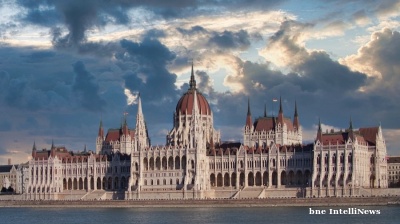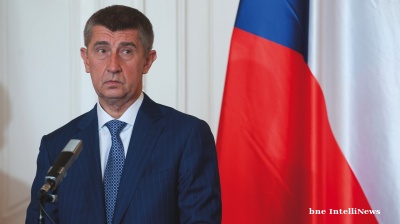Karakalpakstan’s dramatic protests of July 1 thrusted international attention on Uzbekistan’s sole de jure autonomous territory. The publication of Tashkent’s proposed changes to the country’s constitution prompted unprecedented popular mobilisation in Nukus. These amendments would have severely diminished Karakalpakstan’s already narrow autonomy, including the symbolically important right to secede.
The protests and the ensuing crackdown left eighteen dead and over five hundred detained according to the authorities. Uzbekistan’s president, Shavkat Mirziyoyev, announced after the violence that the amendments on Karakalpakstan will not go forward after all.
These events drew new attention to the ongoing process of constitutional reform initiated by Mirziyoyev. Announced in his November 9 re-election victory speech, Mirziyoyev stated that the constitutional amendments are intended to “enhance” the country’s Basic Law in the service of “New Uzbekistan”.
Up until recently, only imprecise points on the substance of the amendments were offered, such as rendering “society” the “initiator of reform”, “enhancing” the role of the mahalla committees (neighbourhood-level political organisations), and centering the family and “traditional human values”.
Later Mirziyoyev said that the changes are meant to render the constitution the “reliable guarantor” of the country’s development and to put human dignity “at the forefront of transformations in all areas”.
Uzbek authorities have been seeking suggestions from the public and plan to put the final version of the amendments to a referendum. Indeed, the constitutional reform commission frames the amendment process as a participatory one and not a top-down imposition.
Why is Mirziyoyev pursuing this constitutional reform now? The timing might seem off for tinkering with the constitution while several crises accumulate inside and outside Uzbekistan.
The constitutional amendments need to be understood in the broader context of Mirziyoyev’s chosen governing strategy. Drawing from the Nazarbayev example – himself inspired by Lee Kwan Yew's Singapore –, Mirziyoyev has sought to legitimise his rule through economic growth and improving living standards. “Reform” has become the keyword for his regime consolidation strategy ever since.
Launching the reform programme shortly after becoming president, Mirziyoyev has brought change to many areas of Uzbek life. Under the slogan of “New Uzbekistan”, this modernization or “upgrading” of Uzbekistan’s authoritarian government has hinged on marginal improvements in social and political rights, and broad economic transformations.
Changes in the political sphere have been few but substantive. Repression has been eased. New channels of communication with the population have been opened, facilitating contacts between local and regional administrators with their constituents. The country has re-engaged with international media and there have been modest improvements in freedom of expression. A plan to allow NGOs to operate in the country is in the works.
Where changes have been more substantive is in the economy. Liberalisation, foreign investment, connectivity and privatisation have moved the country away from Karimov’s model of Soviet-style economic planning.
Changes are many. Uzbekistan’s currency, the som, was made fully convertible. Foreign retailers have been steadily opening new branches in Uzbekistan. Travel to and from Uzbekistan, for business and leisure, has become much easier; the exit visa regime was abolished, visa-free entry has expanded and new border crossings were opened.
Foreign investment has been facilitated by good relations with partners such as China and Russia. In China’s case, the number of Uzbek firms with Chinese capital nearly trebled between 2016 and 2019.
Generally, the regime has become more media savvy. Attracting international investment and tourism necessitated improving Uzbekistan’s image from the lows of the 2005 Andijan massacre. Since 2016, international media has returned to the country. Most recently, Tashkent hired several lobbying firms in Washington DC to capitalise on the goodwill earned after the Taliban took Kabul over in August 2021.
The opening up of Uzbekistan’s economy and the end to government-mandated forced labour in cotton harvesting made Uzbekistan “country of the year” for The Economist in 2019.
The COVID19 era threw many obstacles at this reform project. Critically, the pandemic disrupted the fast GDP growth needed for the reform agenda to succeed. After a strong 2021 rebound, Russia’s full-scale invasion of Ukraine and its economic fallout risks 2022 being a repeat of 2020 when GDP grew at a sluggish 1.9 per cent.
The May 2020 Sardoba dam collapse produced over a billion USD in damages and highlighted the pervasive nature of corruption in the country.
Since the August 2021 Taliban takeover of Afghanistan, the threat of violence coming from the south has materialised many times. This happened most recently in the shape of cross-border rocket attacks against Uzbekistan’s Termez town. The security threat from Afghanistan is in particular sensitive as Karimov frequently justified his brutal regime on security grounds.
Tashkent’s responses to these challenges have highlighted the differences between Karimov’s and Mirziyoyev’s Uzbekistan. But some things have not changed. Namely, the country’s institutions offer no checks on presidential power.
The legislative branch of power is yet to leave its Karimov-era rubber-stamping function. There is no political pluralism with opposition operating underground only.
The press is far from incarnating a fourth estate. Incidents such as those at Sardoba in 2020 and Nukus in 2022 saw the intimidation of journalists covering the events.
Unimpeded, both the reform process and the recent constitutional amendments were initiated by Mirziyoyev. The reforms are passed mostly by presidential decree.
The constitutional amendments released reflect this trend. Shutting down Karakalpakstan’s autonomy would amount to dismantling one of the few institutional barriers to Tashkent’s authority. (Improving inter-ethnic relations was listed as one of the points guiding the amendments.) The amendments would also lengthen the presidential term duration from five to seven years.
Crucially, the constitutional amendments would effectively “reset” Mirziyoyev’s tenure, allowing him to follow in the footsteps of Karimov and avoid constitutional term limits.
Presidential power is not fully unconstrained. The fact that Mirziyoyev pulled back from closing down Karakalpakstan’s autonomy shows that Tashkent is responsive to pressure. But the centrality of the president’s decision underscores again the high degree of regime personalisation in Uzbekistan.
As the population faces rising inflation and unemployment, Mirziyoyev’s bet on growing prosperity for the continuation of his regime faces increased uncertainty.
Empowering institutions capable of checking executive authority could bring Tashkent the legitimacy it needs while economic growth is unavailable. Otherwise, checks to Mirziyoyev’s authority will continue to emerge in the form of protests with destabilising consequences.
-
Ivan Kłyszcz is a doctoral candidate at the Johan Skytte Institute of Political Studies, University of Tartu, Estonia. He studies Russian foreign policy, North Caucasus politics, paradiplomacy and territorial autonomy and tweets @IvanUlisesKK
Opinion

COMMENT: Hungary’s investment slump shows signs of bottoming, but EU tensions still cast a long shadow
Hungary’s economy has fallen behind its Central European peers in recent years, and the root of this underperformance lies in a sharp and protracted collapse in investment. But a possible change of government next year could change things.

IMF: Global economic outlook shows modest change amid policy shifts and complex forces
Dialing down uncertainty, reducing vulnerabilities, and investing in innovation can help deliver durable economic gains.

COMMENT: China’s new export controls are narrower than first appears
A closer inspection suggests that the scope of China’s new controls on rare earths is narrower than many had initially feared. But they still give officials plenty of leverage over global supply chains, according to Capital Economics.

BEYOND THE BOSPORUS: Consumed by the Donald Trump Gaza Show? You’d do well to remember the Erdogan Episode
Nature of Turkey-US relations has become transparent under an American president who doesn’t deign to care what people think.




